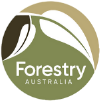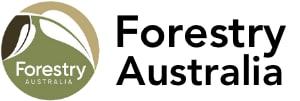
Fire Terminology
Clarifying the use of some Fire Management Terminology Forestry Australia members are encouraged to use the comprehensive, standard reference list of fire terms used in Australia published by the Australasian Fire and Emergency Services Authorities Council (AFAC 2012). This paper is to provide to clarify some commonly misused fire management terms.
Wildfire or Bushfire?
Bushfire is an Australian term for any unplanned landscape fire in grassland, woodland, heathland or forest. However, it is sometimes only used to mean “forest” fire and so has an element of ambiguity about it. Wildfire is the international term used for any unplanned fire in grassland, woodland, heathland or forest. However, it is sometimes taken to imply fires are of high intensity, when wildfire can be low and/or high intensity, but are all “unplanned”. Wildfire is a less ambiguous term and internationally understood and therefore our preferred term.
Planned Burn / Controlled Burn / Prescribed Burn / Cool Burn / Hazard Reduction Burn / Ecological Burn / Habitat Burn / Burning Off?
The preferred term is “Prescribed Burn” for fires which have been carefully planned and documented before implementation with a clearly stated set of management objectives and carried out under clearly prescribed conditions based on fire science.
“Burning Off” is also a deliberately lit fire to achieve certain outcomes, but is done without careful documentation or prescription settings and usually implemented based on the past experience of the owner of the fire. “Controlled Burns”, “Cool Burns”, “Hazard Reduction Burns”, “Regeneration Burns”, “Slash Burns” , “Fuel Reduction Burns”, “Ecological Burns”, “Habitat Burns” and “Backburns” are all forms of Prescribed Burns. Backburning or Prescribed Burning?
Backburning is a planned burning operation used to control the spread of an uncontrolled fire. It is used as an indirect form of fire control and should be carried out after extensive consideration and with skilled fire crews. Backburning is a major strategic decision only to be made by an Incident Controller at a wildfire. Sometimes people will refer to Prescribed Burning as Backburning, but this is not correct. It is true that Backburning is one special form of Prescribed Burning, but Prescribed Burning is far broader than just Backburning.
Backburning or Burning-Out?
Backburning involves lighting a new, independent fire ahead of a wildfire front so as to remove all the fuels from a designated control line back to the wildfire front. Typically the backburn will be burning back into the wind and hence its name. When a backburn and a fire front meet, the local fire intensity is likely to be increased. Under conditions when a wildfire cannot be controlled by direct attack, maintaining control of a backburn is a very risky and difficult strategy to implement and therefore must be sanctioned by the Incident Controller of a Wildfire. Burning-Out may involve small or very large areas of deliberate lighting, but it is done within the limits of an existing fire area, hence it is a tactical decision that can be made of Operational leaders on the fireline or by the Incident Controller. The aim of a burning-out operation is to consume all the fuels within fire control lines under mild and controlled conditions to prevent spotting or intense fire runs breaching the control lines under any expected more severe weather conditions.
“Fuel Load” or “Fuel Level”?
“Fuel Level” is a relative measure of the fuel based on the arrangement, structure, composition, proportion of dead material, and thickness of the fuel elements in the fuel complex. Generally, the “Fuel Level” refers to the “Fine Fuel” component of the fuel complex, i.e. that fuel that burns in the flaming zone of a fire and is generally taken to be dead vegetative material less than 6 mm in thickness and live vegetation less than 2 mm thick. The Fuel Level is often assessed using a visual guide such as the Overall Fine Fuel Hazard Guide written by Hines et al. (2010). “Fuel Load” is one aspect of the fuel level related to the weight of fuel per unit area, often expressed in terms of tonnes per hectare (t/ha). “Fuel Load” is important in calculating the heat release and intensity of fires, but it does not capture other important attributes of fuels that influence fire behaviour. Under dry conditions, the fuel consumed by a fire will also include larger sized pieces of dead woody fuel, >6 mm thickness, that contribute to the depth of the flaming zone, residual heating of vegetation and soil, and the strength of the convective plume above the fire. “Fuel Level” is much better related to attributes of fire behaviour such as flame height, and rate of spread.
“Hazard Reduction”?
According to standard risk assessment procedures, a “Hazard” is a source of potential harm or a situation with potential to cause loss if a value or asset is exposed to it. Fine fuels are often referred to as a “Hazard”, but it is not the fuel that is the hazard, but the nature of the fire that it might support. The real hazards are aspects of fire such as radiation, convective heat, embers and smoke. Therefore, “Hazard Reduction Burning” and “Fuel Reduction Burning” refers to “Prescribed Burning” that changes the “Fuel Level” in a way that reduces the level of radiation, convective heat, number of embers and amount of smoke produced during a fire. References: AFAC. 2012. Bushfire Glossary. Australasian Fire and Emergency Service Authorities Limited (AFAC). 36pp., East Melbourne.
Available at: https://www.afac.com.au/docs/default-source/doctrine/bushfire-terminology.pdf Hines, F, Tolhurst, KG, Wilson, AAG, McCarthy, GJ. 2010. Overall fuel hazard assessment guide, 4th Edition. Department of Sustainability and Environment Victoria, Melbourne. Research Report series No.82, Melbourne.
Available at: https://www.ffm.vic.gov.au/__data/assets/pdf_file/0005/21110/Report-82-overall-fuel-assess-guide-4th-ed.pdf

